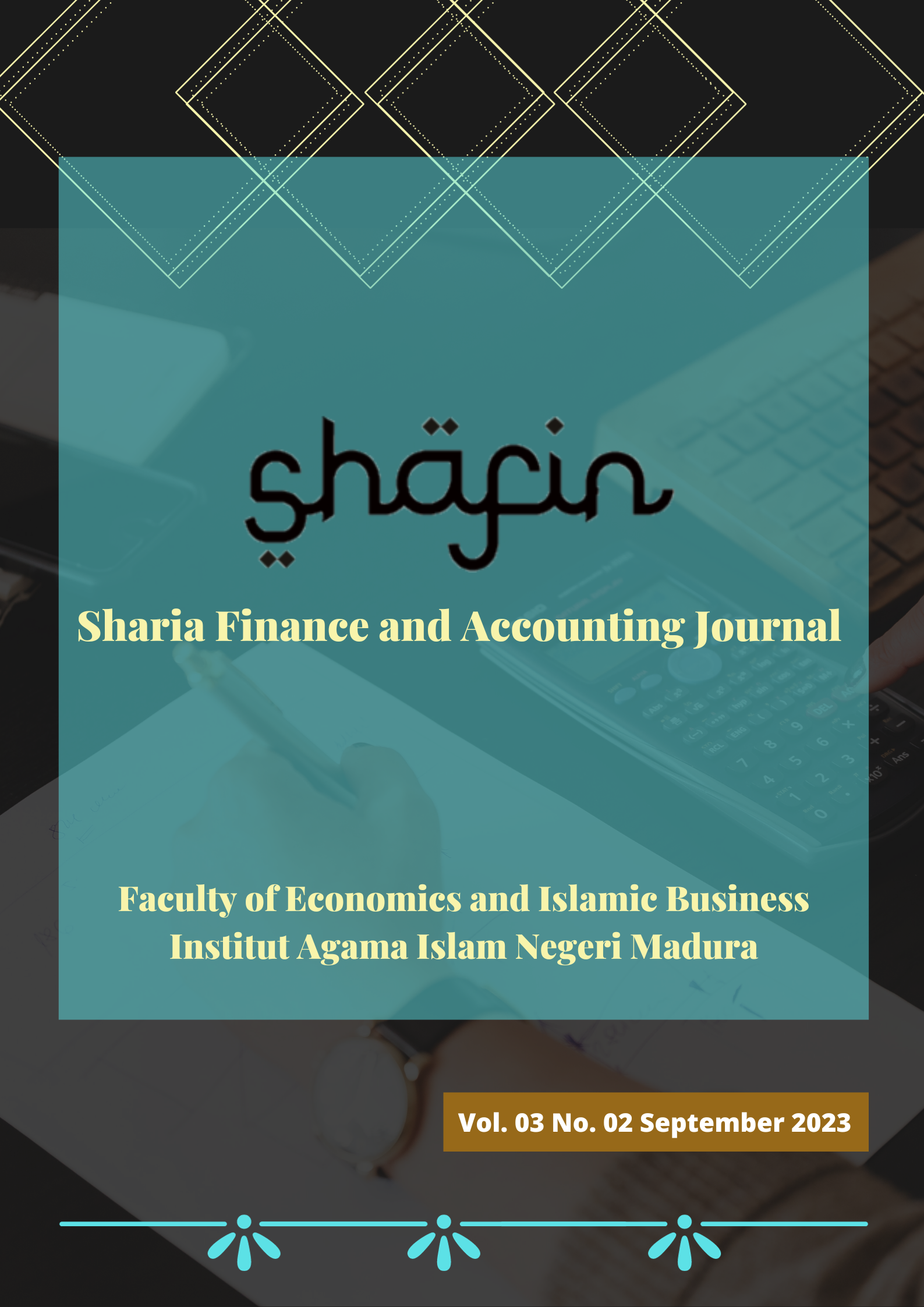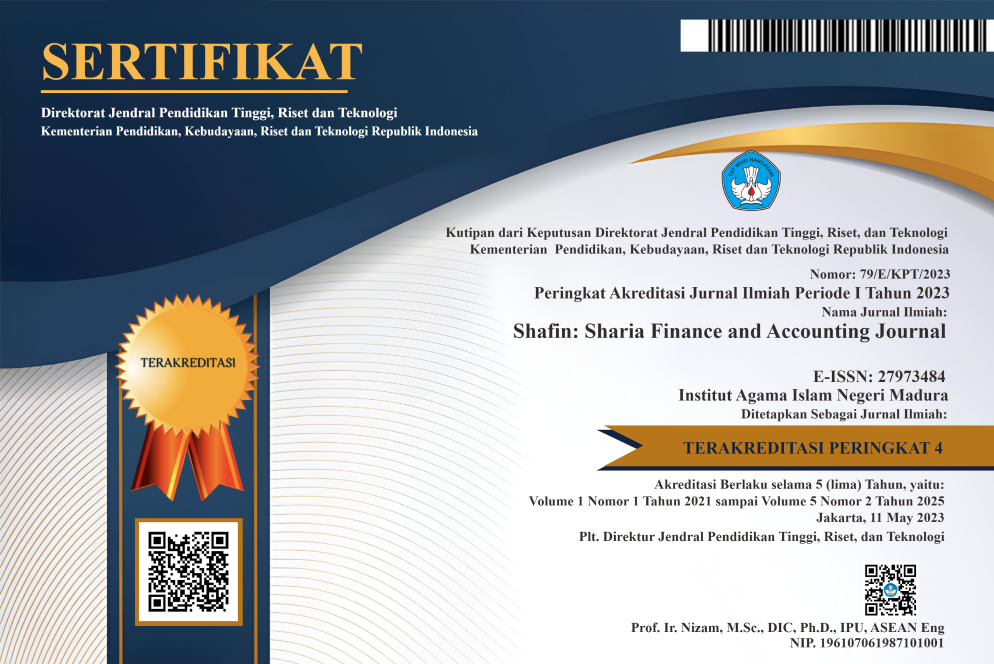Mental Accounting dan Perilaku Keputusan Investasi: Analisis Perbedaan Berbasis Sosial Kultural
 Abstract views: 884
,
Abstract views: 884
,
 PDF (Bahasa Indonesia) downloads: 869
PDF (Bahasa Indonesia) downloads: 869
Abstract
The purpose of this study was to analyze the effect of mental accounting on investment decision behavior and to analyze whether are differences in investment decision behavior in socio-cultural as measured by gender and domicile. The population in this study were college students of accounting program class at Politeknik Negeri Tanah Laut. Politeknik Negeri Banjarmasin and Universitas Islam Negeri Antasari Banjarmasin. The samples in this study are 171 college students, using the purposive sampling technique. Data collected by online and offline questionnaires. The gathered data were analyzed using regression analysis and independent sample t-test. The results of this study indicate that mental accounting has a significant effect on investment decision behavior. Meanwhile, there is no difference between men and women in terms of investment decision behavior. Also, there is no difference between urban and rural respondents in terms of investment decision behavior. This research provides insight to pay attention in case of mental accounting for young investors.
Downloads
References
Anggini, N. D., & Wardoyo, C. (2020). Pengaruh Self-Attribution Bias , Mental Accounting , dan Familiarity Bias terhadap Pengambilan Keputusan Investasi Mahasiswa Akuntansi. Jurnal Riset Bisnis Dan Investasi, 6(3), 97–106. https://ejournal.unib.ac.id/JurnalAkuntansi/article/view/14009/pdf
Baker, H. K. (2017). How Behavioral Biases Can Hurt Your Investing. In Investment Traps Exposed.
Charness, G., & Gneezy, U. (2012). Strong Evidence for Gender Differences in Risk Taking. Journal of Economic Behavior and Organization, 83(1), 50–58. https://doi.org/10.1016/j.jebo.2011.06.007
Mahadevi, S. A., & Haryono, N. A. (2021). Pengaruh Status Quo, Herding Behaviour, Representativeness Bias, Mental Accounting, serta Regret Aversion Bias terhadap Keputusan Investasi Investor Milenial di Kota Surabaya. Jurnal Ilmu Manajemen, 9(2), 779. https://doi.org/10.26740/jim.v9n2.p779-793
Mahastanti, L. A. (2012). Mental Accounting Dan Variabel Demografi : Sebuah Fenomena Pada Penggunaan Kartu Kredit. Kinerja, 16(2), 89–102. https://doi.org/10.24002/kinerja.v16i2.360
Margaretha, F. (2015). Literasi Keuangan Syariah di Perguruan Tinggi Keagamaan Islam ( Studi Kasus UIN Alauddin Makasar ) Salmah Said dan Andi Muhammad Ali Amiruddin Universitas Islam Negeri Alauddin Makassar Keywords : Literasi , Keuangan , Islam , Perguruan Tinggi , UIN Alaud. Al-Ulum, 17(1), 76–85. https://doi.org/10.9744/jmk.17.1.76
Mittal, M., & Vyas, R. K. (2011). A Study of Psychological Reasons for Gender Differences in Preferences for Risk and Investment Decision Making. IUP Journal of Behavioral Finance, 8(3), 45–60. http://search.ebscohost.com/login.aspx?direct=true&db=bth&AN=71423465&site=ehost-live
Muthia, F. (2022). Faktor Demografi dan Pengaruhnya Terhadap Toleransi Risiko Finansial. Jembatan: Jurnal Ilmiah Manajemen, 19(1), 5–24.
Nofsinger, J. R. (2001). The Impact of Public Information on Investors. Journal of Banking & Finance, 25(7), 1339–1366.
Nofsinger, J. R. (2005). Psychology of Investing (Second Edition). Prentice-Hall Inc.
Pompian, M. (2012). Behavioral Finance and Wealth Management. How To Build Investment Strategies That Account For Investor Biases. John Wiley & Sons.
Ramadani, A. F. (2018). Pengaruh Usia, Pendapatan, Jenis Kelamin dan Gaya Hidup terhadap Masalah Kartu Kredit dengan Mental Accounting sebagai Intervening. Unika Soegijapranata Semarang.
Ratnadewi, F. (2014). Behavioral Finance dalam Keputusan Investasi Saham (Studi Bias Perilaku Pada Investasi Mahasiswa Di Kota Bandung).
Ritter, J. R. (2003). Behavioral finance. Pacific Basin Finance Journal, 11(4), 429–437. https://doi.org/10.1016/S0927-538X(03)00048-9
Shefrin. (2002). eyond Greed and Fear: Understanding Behavioral Finance and the Psychology of Investing. Oxford.
Sumtoro, A. & Anatasia, N. (2015). Perilaku Keuangan dalam Pengambilan Keputusan Berinvestasi Properti Residensial di Surabaya. Finesta, 3(1), 41–45. http://publication.petra.ac.id/index.php/manajemen-keuangan/article/view/2960.
Thaler, R. H. (1985). Mental Accounting and Consumer Choice Author ( s ): Richard Thaler Published by : INFORMS Stable URL : http://www.jstor.org/stable/183904. Marketing Science, 4(3), 199–214.
Wulandari, D. A., & Iramani, R. (2014). Studi Experienced Regret, Risk Tolerance, Overconfidance Dan Risk Perception Pada Pengambilan Keputusan Investasi. Journal of Business and Banking, 4(1), 55. https://doi.org/10.14414/jbb.v4i1.293
Yunita, N. (2020). Pengaruh Gender Dan Kemampuan Akademis Terhadap Literasi Keuangan dalam Perilaku Pengelolaan Keuangan pada Mahasiswa Jurusan Akuntansi. Prisma (Platform Riset Mahasiswa Akuntansi), 01(02), 1–12. http://www.ojs.stiesa.ac.id/index.php/prisma/article/view/414
Zahera, S. A., & Bansal, R. (2018). Do investors exhibit behavioral biases in investment decision making? A systematic review. Qualitative Research in Financial Markets, 10(2), 210–251. https://doi.org/10.1108/QRFM-04-2017-0028
The journal operates an Open Access policy under a Creative Commons Non-Commercial Share-Alike license. All articles published Open Access will be immediately and permanently free for everyone to read and download.
• Creative Commons Attribution-NonCommercial (CC-BY-NC)

Shafin: Finance and Sharia Accounting Journal by http://http://ejournal.iainmadura.ac.id/index.php/shafin is licensed under a Creative Commons Attribution-NonCommercial 4.0 International License.
Based on a work at http://ejournal.iainmadura.ac.id.















